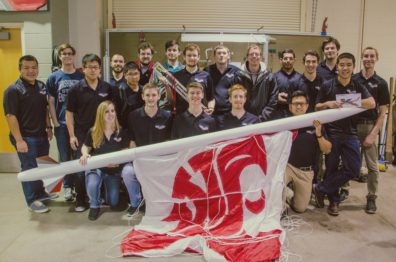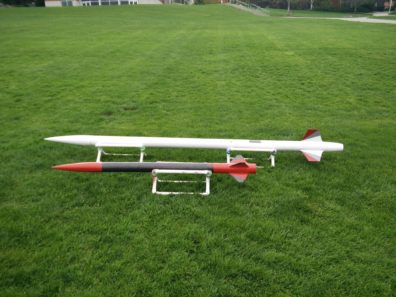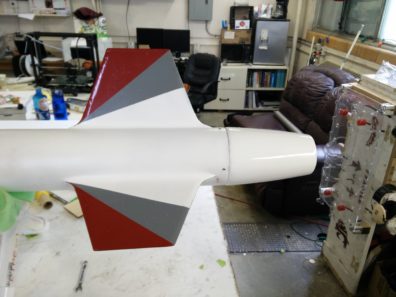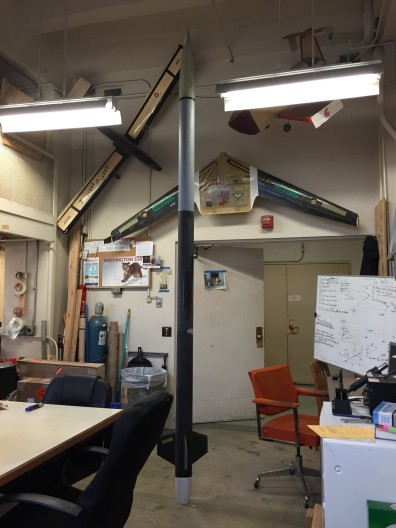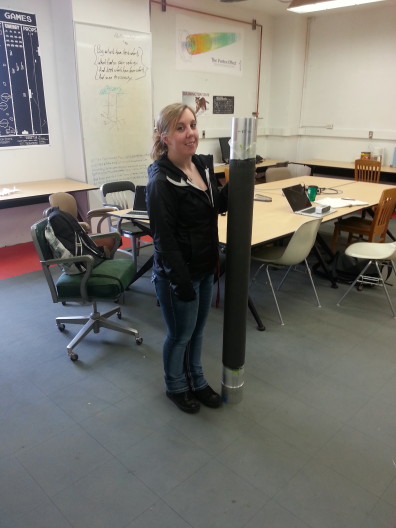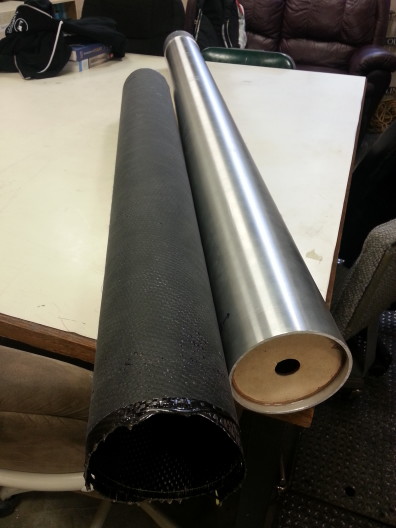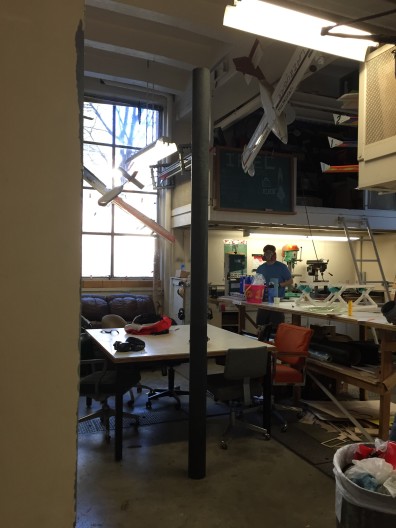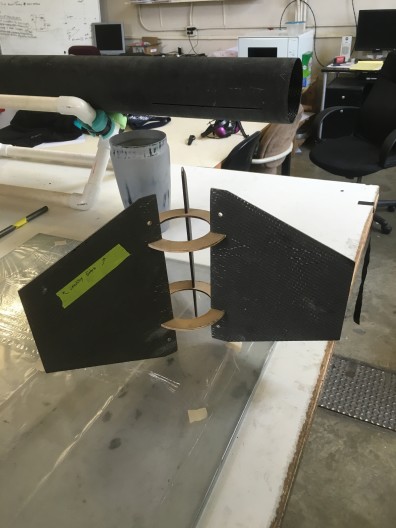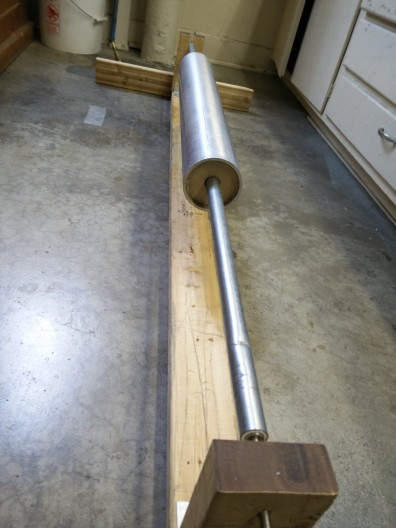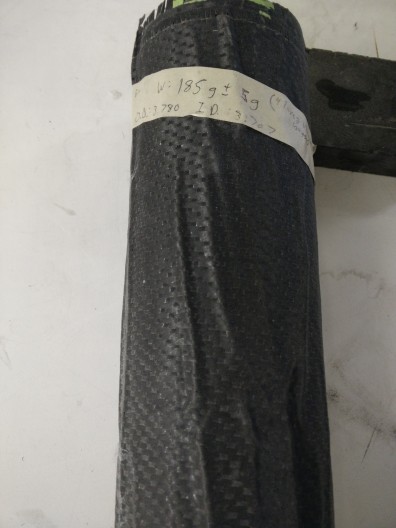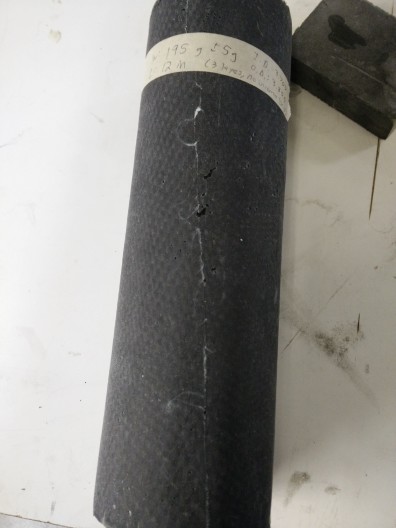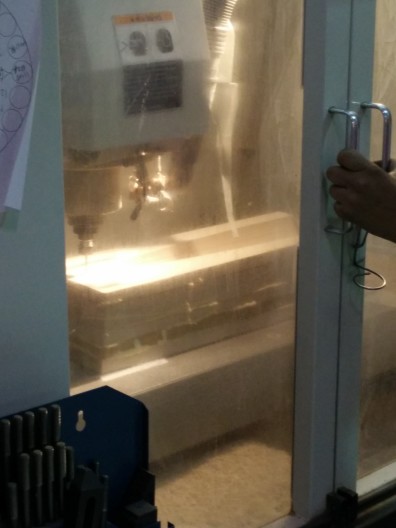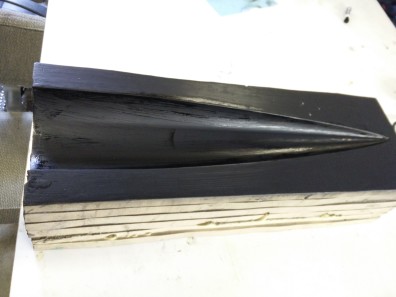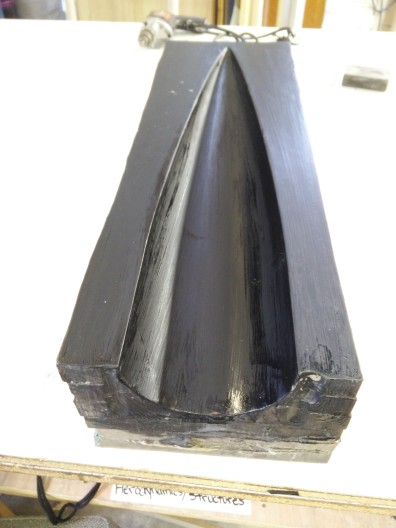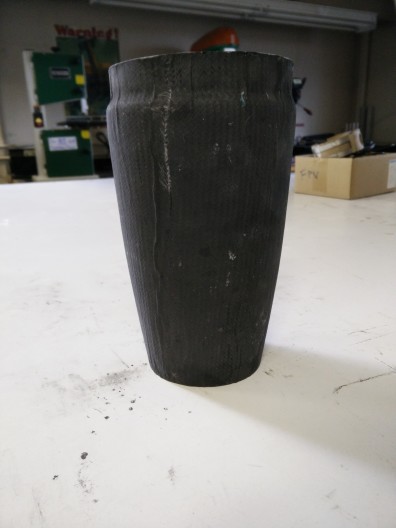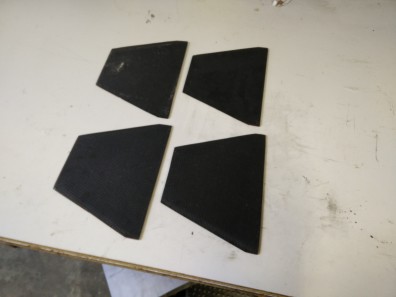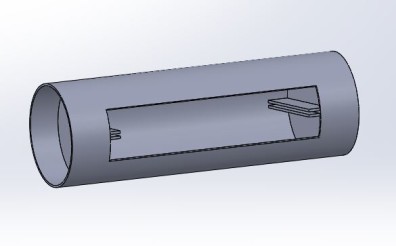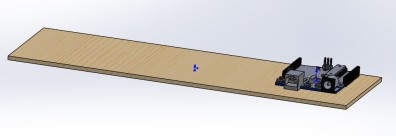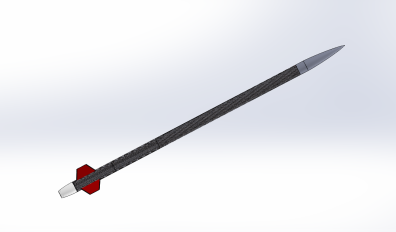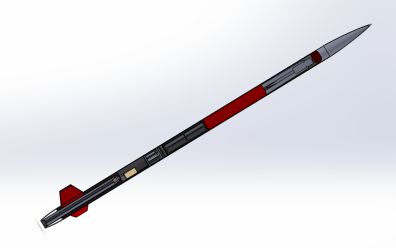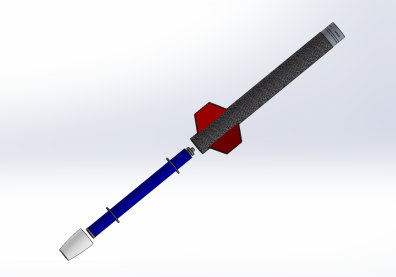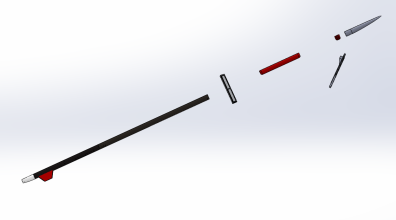Our solid propulsion team has been working to create and develop our own solid APCP rocket motor. Specifically, we have been reverse engineering the commercial Cessaroni M1300 motor, as we have modeled the performance of this motor according to our rocket specifications. The APCP motor fits within the competition constraints, is a powerful solid propellant, and is proven as a solid motor by NASA. We also chose the cross symbol as the grain geometry due to the thrust curve and immediate power required to get off the ground initially. We will be ordering our aluminum casing from a commercial site, which will also provide heat shielding and case parts for our motor. We decided to purchase our motor casing commercially due to the fact that creating the propellant is a complex enough task, and creating our own case and case parts would add a drastic amount of unnecessary costs, time, and complexity to our project. We have also put in efforts to locating a test site within the WSU lab spaces and also with the local fire department. In addition, we will be strongly focusing on creating processes and safety during our testing. There has been great progress and work done on our team, as we are trying to overcome one of the greatest innovations for this year’s competition. Here is a breakdown of the progress that we have made.
January: We received our materials for motor manufacturing. This included the ammonium perchlorate, aluminum powder, and iron oxide powder. From there, we went ahead and created our first batch of motors to test. Our goals for the initial tests were to successfully ignite a motor without an explosion. Although we took extra safety precautions, we were still not able to successfully ignite the motor on our first test. This prompted us to go back to the drawing board and re-assess our manufacturing process as this was what we suspected to be the flaw in our motor. By the end of the month, we had created a new batch of motors, modified our manufacturing process, coordinated with the Pullman Fire Department for a test site, and created an updated safety checklist. By the time we tested on January 31st, it was a huge success and we were able to successfully launch all 10 specimens that day. Here are some images of the test site and specimens that day:
Here’s a good picture of the launch site. We used the dirt mound that our team member is standing on in the right side of the picture. This was a good, isolated section that enabled us to be far enough away from the launch.
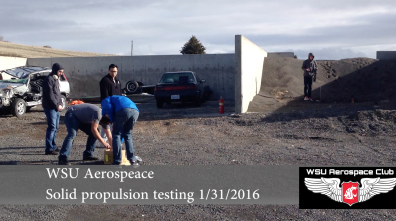
Here is a simple image of our test stand. It essentially works by inserting an igniter down the circular grain geometry. The ignitor is connected to two alligator clips that lead to our fuse box. The motor is clamped down to a 3D printed mount (the red object) and slid down the centering rods. Once we have equipped ourselves with safety gear, we went a head and ignited the motor.
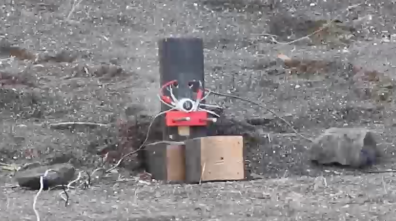
Here’s a great image of the side profile on our launch set up and our motor once it has been ignited!

February: For this previous month, we went ahead and created a larger scale motor to see the viability of scaling up with our manufacturing process. Our tests were all successful, and we were able to take some learning points away from these tests such as additional safety precautions and further knowledge on grain geometry. Later that month, we also started the process of requesting a data acquisition system to collect data on our motor. The rest of the month was filled with modifications of the data acquisition process and adjustments to our APCP motor composition.
Some of our recent accomplishments include a modified test stand, finalization of our data acquisition process, and the beginning the process of manufacturing out nozzle for more detailed tests.
